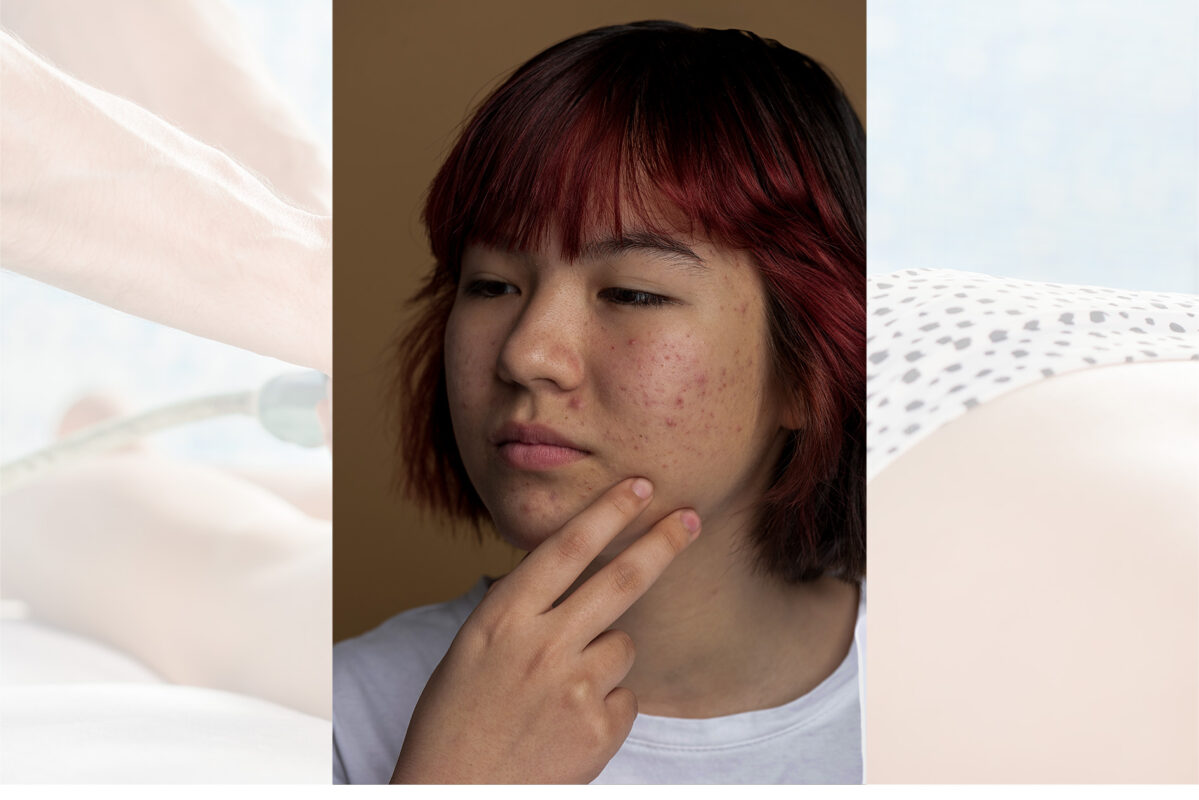Laser Hair removal
How To Know If You Have Pimples or Ingrown Hairs
Red bumps appearing on your skin can often be a cause of concern. These unwelcome blemishes may lead to feelings of self-consciousness and the desire to stay indoors. However, understanding the difference between acne and ingrown hairs is crucial. While both conditions are common and treatable, their causes and treatments differ significantly.
Identifying a Pimple
Acne occurs due to clogged pores filled with oil and dead skin cells, leading to irritation and the formation of a pimple. There are various types of acne, each with distinct characteristics:
1. Whiteheads
Whiteheads, or closed comedones, are identified by a white dot near the top of the bump.
2. Blackheads
Blackheads, known as open comedones, appear as small black dots due to the open pore.
3. Nodules
Nodular acne occurs beneath the skin’s surface, causing swelling.
4. Cystic Acne
Cystic acne is severe, often filled with pus and challenging to treat.
Acne commonly affects the face, back, and chest, primarily due to an overproduction of skin oil, especially during puberty when hormonal changes occur.
Understanding Ingrown Hairs
Ingrown hairs resemble acne but are caused by hair growing sideways into the skin, leading to inflammation. Common areas for ingrown hairs include the legs, chest, pubic region, and face, particularly after shaving. Ingrown hairs can be painful and, if left untreated, may result in scarring.
Prevention Methods
Preventing Acne
- Regular Cleansing: Cleanse your face twice daily with a gentle cleanser to remove dirt, oil, and bacteria.
- Moisturizing: Choose non-comedogenic moisturizers to avoid clogging pores.
- Reduce Makeup: Minimize makeup use to allow the skin to breathe.
- Avoid Touching: Refrain from touching your face to prevent the transfer of bacteria and oils.
Preventing Ingrown Hairs
- Exfoliation: Prioritize exfoliation to remove dead skin cells and prevent hair trapping.
- Pore Opening: Open pores before shaving to achieve a closer shave and reduce irritation.
- Shave with the Grain: Shave in the direction of hair growth to minimize irritation.
- Sharp Razors: Use sharp razors to prevent skin inflammation and bacterial buildup.
Permanent Solutions
For those seeking a permanent hair removal solution, Intense Pulsed Light (IPL) devices offer an effective option. IPL targets hair follicles’ melanin with light energy, inhibiting regrowth. Unlike laser treatments, IPL can be performed at home, offering a safe and painless method for hair removal and skin improvement.
Differentiating Between Acne and Ingrown Hairs
To distinguish between acne and ingrown hairs, consider the location, size, and color of the bump. Bumps occurring in areas prone to shaving or tweezing are likely ingrown hairs, while the size and color may vary between the two conditions.
Conclusion
While acne and ingrown hairs can be bothersome, they are manageable with proper care. Regular exfoliation, cleansing, and moisturizing are essential for maintaining clear skin. For those seeking a long-term solution, IPL devices offer a convenient and effective method for hair removal and skin enhancement. By prioritizing skincare and choosing appropriate treatments, you can achieve smoother, healthier skin without the worry of acne or ingrown hairs.

